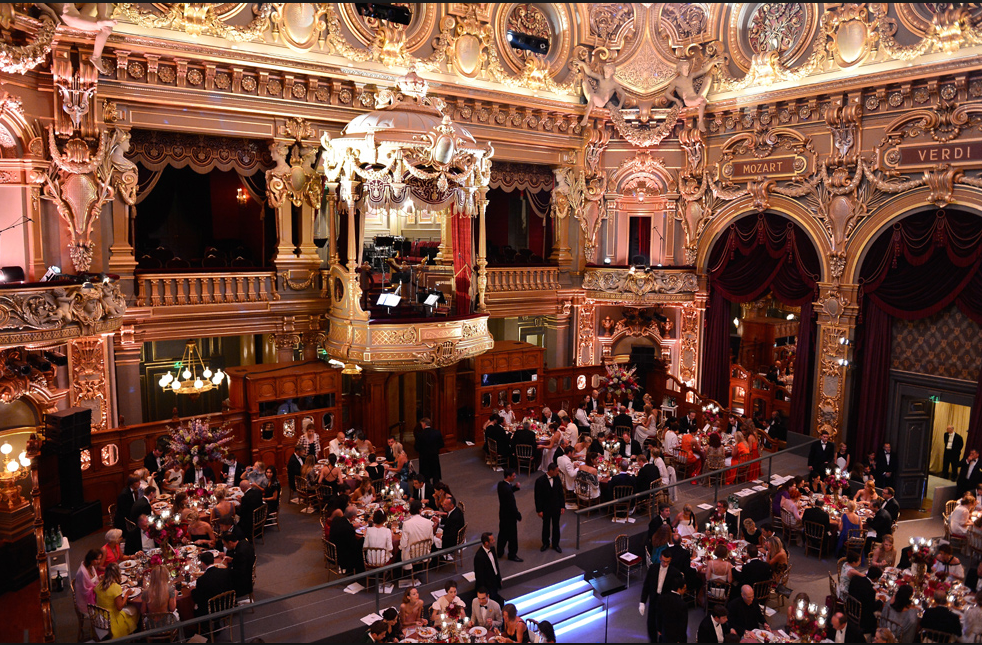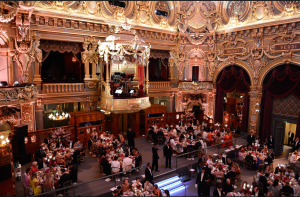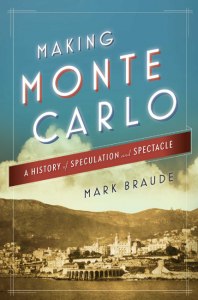
Glitzy Monte Carlo

Mark Braude, Canadian born historian, looks behind the creation of Monte Carlo, how a small town grew into a prosperous resort and its rapid rise, luring of Monte Carlo’s gambling tables, and the desperation on the faces of gamblers who lost left a lasting impression on Edvard Munch. In 1891, the Norwegian painter described the scene as “an enchanted castle – where the demons are having a gathering”.
When Monaco introduced legalised gambling in 1855, it had the advantage of being the only such place along the south coast of Europe. Monte Carlo’s World of Luxury funded by gambling losses is yet to exist. The area of wasteland about an hour on foot east from Monaco’s royal palace, was then called Spelugues, ( Grottoes). The locals used to avoid the area as bandits used hide in the dark caves and often rob anyone who ventured along that strip of coast. In 1863, Monte Carlo casino opened, as the Royal decree forbade them from gambling. Mont Carlo named after Prince Charles II who reigned over Monaco from 1856 to 1889 was funded by foreign investments. Braude describes Francois Blanc, the French entrepreneur, professional gambler, stock market manipulator who worked his way up from a humble start to become Monte Carlo’s gambling supremo until his death in 1877, dealer Basuk Zaharoff, who could have been the secret owner of the Monte Carlo Casino in the 1920s , American press agent Elsa Maxwell Hollywood maven, hired as the casino’s publicist, who persuaded highest movers, rollers and shakers to Monte Carlo and whose motive was “ Find out what story people wanted and give it to them”, and Rene Leon a visionary Jewish businessman who revitalised the resort after WWI, Jan Cocteau, Pablo Picasso, Cole Porter, Ernest Hemingway and other American expats who colonised the Riviera in the 1920s.
Braude’s narrative history of classic rags- to riches tale of Monte Carlo, capturing its nineteenth- century rise as the world’s first modern casino-resort and its Jazz Age heyday, and creation of a potent symbol of luxury and cosmopolitan glamour – playground for the super-rich, also mentions an eventful spring day in 1930, when a man walks into the Monte Carlo casino and throws a grenade on to the spinning wheel of roulette table. Although no one was hurt, the roulette table had been solidly built that it had absorbed the force of the blast and project it up to the ceiling, but the management was so efficient that the damage had been cleared up and the wheels were spinning again within an hour. The resort declined in the WWI but was reinvented again, to suite the desire of the new Jazz Age tastemasters, Zelda Fitzgerals, Sarah Murphy and Coco Chanel.
Making Monte Carlo: A History of Speculation and Spectacle by Mark Braude Simon & Schuster $27, 304 pages

